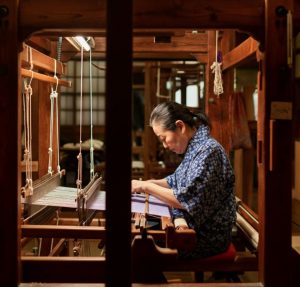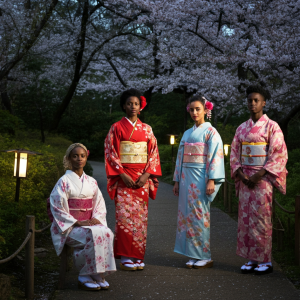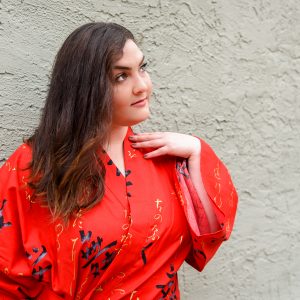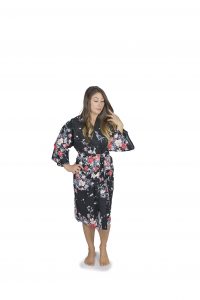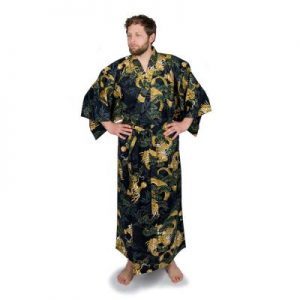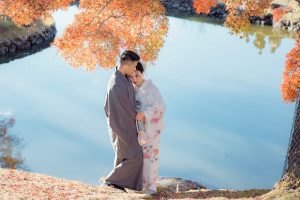Timeless, elegant, and inherently Japanese, kimonos and yukatas have captured the imagination of fashion enthusiasts worldwide for centuries. While they remain symbols of Japanese heritage, these traditional garments are evolving in response to global trends, technological advancements, and the push for sustainable fashion. The question is no longer whether kimonos and yukatas can adapt, but how they will redefine themselves in a world that seems to move faster every day.
This article dives into the future of kimonos and yukatas, analyzing how cultural preservation, modern adaptation, and international influence are reshaping the essence of these iconic garments.
A Heritage Worth Preserving
Kimonos and yukatas have historically held unique positions within Japanese society. Kimonos are often associated with formal ceremonies, weddings, and tea rituals, while yukatas serve as lightweight, casual wear ideal for summer festivals. Beyond functionality, these pieces represent craftsmanship, storytelling, and family heritage, passed down through generations.
However, preserving these traditions is not without challenges. The artisan industry supporting these garments has seen significant decline over the years due to a combination of aging craftspeople, rising materials costs, and diminished everyday use in Japan. Yet, there is hope on the horizon. Institutions and cultural advocates are working to document the techniques used in textile production and kimono design, ensuring these skills are not lost.
At the same time, brands specializing in traditional Japanese clothing have begun leveraging digital storytelling to reach younger generations. Campaigns that highlight the beauty and legacy of kimonos resonate with both local audiences and international admirers of Japanese culture, opening avenues for preservation through education and commerce.
The Modern Makeover
While the essence of kimonos and yukatas lies in their traditions, their modern iterations are stepping into uncharted territory. Today, contemporary designers are deconstructing and reinterpreting these garments for the global marketplace.
Key elements such as obi belts or signature floral motifs are being incorporated into ready-to-wear pieces like dresses, jackets, and trousers, offering a fusion of East and West. Collaborations with international designers have also added an exciting twist—think streetwear infused with kimono-inspired silhouettes and diverse fabrications.
The rise of customization has played a major role in making these garments more appealing to younger audiences. Modern technology, including digital embroidery and 3-D printing, allows consumers to personalize designs while maintaining the spirit of the traditional garment. This trend of blending heritage with individuality has struck a chord in the era of self-expression.
Technology as a Catalyst
Technological advancements have permeated every sector, and traditional clothing is no exception. The revival of kimonos and yukatas owes much to technologies that have made their production accessible and their appeal global.
For one, e-commerce platforms are expanding the reach of Japanese fashion designers beyond geographical boundaries. Brands and artisans are now marketing their creations directly to consumers in Europe, the Americas, and beyond, bypassing the need for brick-and-mortar stores.
3-D design software is another game-changer, allowing designers to experiment with innovative patterns and non-traditional textiles while optimizing waste reduction. Meanwhile, augmented reality (AR) apps are enabling customers to visualize how different kimonos or yukatas might look on them before making a purchase, offering a modern shopping experience aligned with convenience-driven consumer behavior.
Sustainability and Ethical Fashion
The global fashion industry’s shift toward sustainability has also influenced the trajectory of kimonos and yukatas. Fast fashion has never been compatible with the meticulous craftsmanship these garments require—a factor positioning kimonos as a natural fit for slow fashion movements.
Artisans are increasingly opting for organic and locally sourced materials, while upcycling and recycling kimono fabrics into accessories or modern clothing pieces are also gaining traction. Some initiatives aim to integrate traditional dyeing techniques with sustainable practices. These changes not only make a compelling case for the environmental benefits of choosing a handmade kimono but also preserve centuries-old fabric-making traditions.
The Role of Younger Generations
A surprising factor in the resurgence of kimonos and yukatas is the involvement of younger Japanese generations. Rather than dismissing these garments as relics of the past, many young people are reviving old traditions and wearing kimonos or yukatas in fresh and unexpected ways.
Social media platforms such as Instagram and TikTok are proving instrumental in this trend. Influencers and enthusiasts are showcasing colorful, modern arrangements of kimonos paired with statement accessories like boots or sneakers. This wave of creativity not only keeps kimono culture alive but also makes it relatable to a new demographic.
Additionally, the international community’s growing interest in Japanese culture—spurred by anime, festivals, and tourism—has amplified appreciation for traditional clothing. Whether worn for cosplay, weddings, or cultural exchange, kimonos and yukatas are finding their way into wardrobes around the world.
What Lies Ahead
Looking forward, the future of kimonos and yukatas appears both vibrant and promising. The growing movement to preserve traditions, combined with modern technology and sustainable practices, positions these garments for a renaissance in global fashion.
We might see increases in wearable tech seamlessly integrated into kimonos to make them more functional or temperature-adaptive. Cross-industry collaborations could introduce kimonos to high-tech fashion shows, further showcasing their versatility.
Perhaps most importantly, kimonos are poised to remain symbols of cultural dialogue, bridging Japan’s heritage with the global innovation landscape. The blending of tradition and reinvention will ensure that kimonos and yukatas continue to captivate future generations.
If these garments represent Japan’s past, they also hold the key to its sartorial future—an enduring legacy that evolves, one thread at a time.
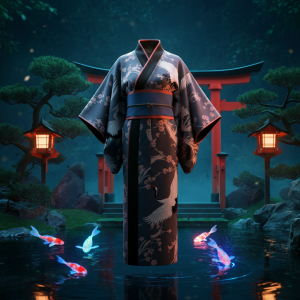
The future of Kimonos



